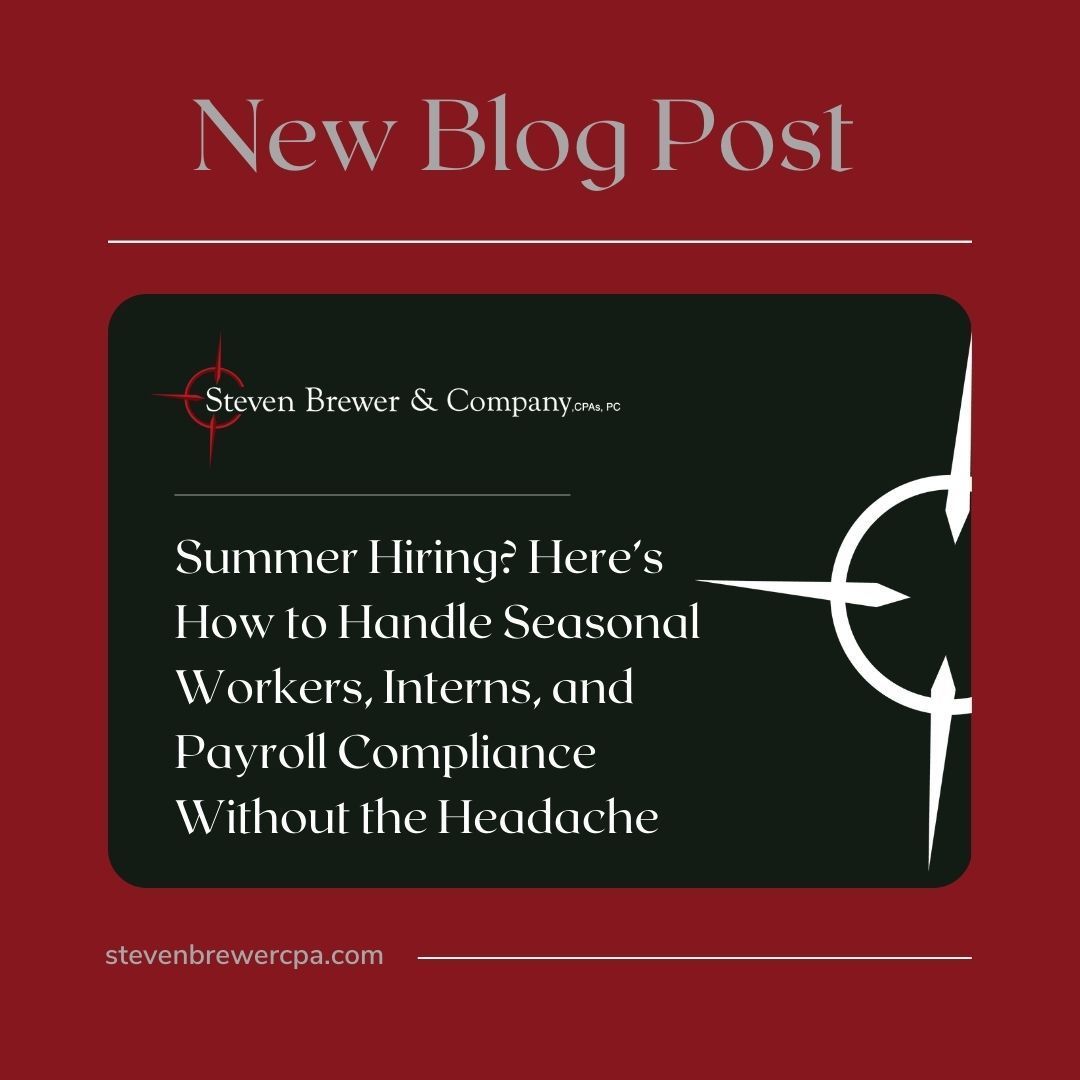How to Build Your Financial House From the Foundation Up
Author name
If you’re a fan of home improvement shows, you know how this goes: The clients, usually a couple hoping to build, buy or renovate a home, are mostly focused on the aesthetics — the kitchen countertops, the bathroom tile, the light fixtures, the wainscoting.
But, of course, there’s more to designing a home than picking the flooring or the fixtures. Without a strong foundation, sturdy walls and a dependable roof, the couple’s beautiful house won’t hold up well against the elements, age and other risk factors during the years their family lives there. Their real estate agent or contractor often has to remind them about what’s really important as they move forward.
But, of course, there’s more to designing a home than picking the flooring or the fixtures. Without a strong foundation, sturdy walls and a dependable roof, the couple’s beautiful house won’t hold up well against the elements, age and other risk factors during the years their family lives there. Their real estate agent or contractor often has to remind them about what’s really important as they move forward.
And I have to say, I get where those pros are coming from every time — because the same holds true for building a family’s financial house. (Though I’ve yet to see an entire television network devoted to designing a financial portfolio.)
If you’re working with a financial adviser, you may have heard him or her refer to drawing up a “blueprint” for reaching your financial goals. And that’s an apt description. When you’re building your fiscal house, you’ll want to be sure you have a detailed plan that includes every aspect of your financial future and the methods and materials you’ll be using to help get you to your objectives.
Your financial portfolio — the collection of assets you’ll use to create a safe and comfortable future — should be allocated and managed in a way that helps you weather economic downturns, market volatility, fluctuating interest rates, rising inflation, risks that come with aging and other changes in your life.
Creating the blueprint for your financial house
What should your financial blueprint look like? It will be different for everyone. But a secure fiscal house will have the same basic characteristics as a well-built home.
A strong foundation
Your most stable assets typically will form the foundation of your financial portfolio. Although no investment is without risk, these are generally assets you can count on to stay solid — and provide a reliable income — when the economy or your personal finances take a hit or feel shaky. Some examples include:
Savings and certificates of deposit (CDs), which are protected by the Federal Deposit Insurance Corp. (FDIC)
Government bonds, which are backed by the U.S. Department of the Treasury
Fixed and fixed index annuities that are protected by a reputable insurance company.
Sturdy walls
The “walls” of your fiscal house should be sturdy — but because they can be repaired or rebuilt more easily than the foundation, these assets don’t have to be quite as invulnerable. Investments at this level can add value to your portfolio (by providing income, income protection and diversification), but they also may be exposed to moderate risk, so there’s some potential for growth. A few examples include:
Corporate and municipal bonds
Conservative dividend investments
Private real estate investment trusts (REITs)
A dependable roof
Of course, you want your roof to hold up against whatever the elements might throw at it. But if it is damaged, you likely can fix or replace it without the whole house falling in — as long as the lower levels are built to last. The roof of your fiscal house represents the investments that carry the highest risk you can tolerate (both financially and emotionally). And they can help you grow your money for the future. These assets might include:
Stocks
Mutual funds
Exchange-traded funds (ETFs)
Variable annuities
Where to start
Of course, every individual and family has different needs — and every financial plan will (or should, at least) be a little bit different to accommodate those needs. But if you’re looking for a good starting point, you may want to use the “Rule of 100” to determine how your assets should be allocated when building your fiscal house. That means taking the number 100, subtracting your age and using the difference to determine the percentage of your money you want to invest in riskier assets to maximize growth.
If, for instance, you’re 45 and in no rush to retire, you might feel comfortable investing 55% of your portfolio in stocks or ETFs. You’ll get the growth you’re looking for, but should you lose money in a market downturn, you’ll still have several years to recover.
But if you’re closer to retirement — let’s say 65 — you may want to limit the risk in your portfolio to 35% or less. You still can benefit from some growth, but with less time to recover from a market decline, you may choose to play it a bit safer.
Don’t forget ongoing maintenance
Making occasional upgrades and repairs can be an important part of maintaining your home’s value. And the same holds true for your portfolio. It can be helpful to reevaluate your investments and investing strategies at least once a year to be sure your plan stays aligned with your goals.
Over time, asset allocations may shift based on market performance, and you may need to rebalance your portfolio. You also may find that your tolerance for risk has changed, and a little remodeling is necessary. Or, if you realize your original design just isn’t functional for your family, you may want to seek a second opinion or go for a complete renovation.
You don’t have to look hard to find an example of why it’s so critical to design and maintain your fiscal house for the long haul.
Just a few short years ago, pretty much everyone’s financial portfolio was doing well thanks to an 11-year bull market. Then in March 2020, the COVID crisis rolled in and caught everyone off guard. And we all got a good reminder of how important it is to build a fiscal house that holds up against the storms we can predict — and those we can’t.
Is your fiscal house move-in ready?
One thing we’ve all learned from watching home improvement shows is that doing it yourself isn’t always the best way to go.
Similarly, some parts of investing may be doable on your own — and even fun. And you should have plenty of input into what you want from your plan.
But you’ll likely find it makes sense to work with a pro when you’re drawing up your overall financial blueprint — or making any big choices or changes. Mistakes and oversights can be costly, especially when you’re closing in on retirement. You’ll need a portfolio that’s carefully planned to keep you secure for the many years ahead.
Kim Franke-Folstad contributed to this article.
The appearances in Kiplinger were obtained through a PR program. The columnist received assistance from a public relations firm in preparing this piece for submission to Kiplinger.com. Kiplinger was not compensated in any way.
Kurt Supe, John Culpepper and Brian Quick offer securities through cfd Investments, Inc., Registered Broker/Dealer, Member FINRA &SIPC, 2704 South Goyer Road, Kokomo, IN 46902, 765-453-9600. Kurt Supe, Andrew Drufke and Brian Quick offer advisory services through Creative Financial Designs, Inc., Registered Investment Adviser. Creative Financial Group is a separate and unaffiliated company. The CFD Companies do not provide legal or tax advice.
Credit: ANDREW DRUFKE

Many taxpayers don’t feel the need to keep home improvement records, thinking the potential gain when they sell their home will never exceed the amount of the tax code’s exclusion for home gains explained as follows. Under the current version of the tax code, you are allowed to exclude from your income up to $250,000 ($500,000 for married couples) of gain from the sale of your primary residence if you owned and lived in it for at least 2 years (24 months) of the 5 years before the sale. You also cannot have previously taken a home-sale exclusion within the 2 years immediately preceding the sale. There is no limit on the number of times you can use the exclusion if you meet these time requirements; however, extenuating circumstances can reduce the amount of the exclusion. The home-sale gain exclusion only applies to your main home, not to a second home or a rental property. As noted above, you must have used and owned the home for 2 out of the 5 years immediately preceding the sale. The years don’t have to be consecutive or the closest to the sale date. Vacations, short absences, and short rental periods do not reduce the use period. If you are married, to qualify for the $500,000 exclusion, both you and your spouse must have used the home for 2 out of the 5 years prior to the sale, but only one of you needs to meet the ownership requirement. When only one spouse in a married couple qualifies, the maximum exclusion is limited to $250,000 instead of $500,000. If you don’t meet the ownership and use requirements, there are some situations in which a prorated exclusion amount may be possible. An example of this situation would be if you were required to sell the home because of extenuating circumstances, such as a job-related move, a health crisis or other unforeseen events. Another rule extends the 5-year period to account for the deployment of military members and certain other government employees. Please call this office if you have not met the 2 out of 5 rule to see if you qualify for a reduced exclusion. But what if your home sale gain is more than the home sale exclusion? Then it is in your best interests to have kept home improvement records, since the costs of improvements can be added to your purchase price of the home to be used in determining the gain. So keeping the receipts for the improvements, even if only in a folder or a shoe box, may be useful in the future when you sell your home. Here are some situations when having home improvement records could save taxes: The home is owned for a long period of time, and the combination of appreciation in value due to inflation and improvements exceeds the exclusion amount. The home is converted to a rental property, and the cost and improvements of the home are needed to establish the depreciable basis of the property. The home is converted to a second residence, and the exclusion might not apply to the sale. You suffer a casualty loss and retain the home after making repairs. The home is sold before meeting the 2-year use and ownership requirements. The home only qualifies for a reduced exclusion because the home is sold before meeting the 2-year use and ownership requirements. One spouse retains the home after a divorce and is only entitled to a $250,000 exclusion instead of the $500,000 exclusion available to married couples. There are future tax law changes that could affect the exclusion amounts. Everyone hates to keep records but consider the consequences if you have a gain and a portion of it cannot be excluded. You will be hit with capital gains (CG), and there is a good chance the CG tax rate will be higher than normal simply because the gain pushed you into a higher CG tax bracket. Before deciding not to keep records, carefully consider the potential of having a gain more than the exclusion amount. Home improvements include just about anything that will increase the value of the home, from big ticket items like remodeling a kitchen, adding another room or a swimming pool, and landscaping to smaller items like ceiling fans. But there are some home improvements that cannot be included in the cost of home improvements, or may be only partly included. Examples are items which qualify for tax credits such as home solar, home energy efficient improvements or those that qualify for a tax deduction such as handicap improvements. In addition, the costs of general maintenance or repairs, such as fixing leaks, painting (interior or exterior), and replacing broken hardware do not count as improvements. If you have questions related to the home gain exclusion or questions about how keeping home improvement records might directly affect you, please give this office a call.

With the signing of the One Big Beautiful Bill Act (OBBBA) many of the environmental credits that were in place and set to expire sometime in the future have now been moved up in their expiration dates. Below is a list of the credits set to expire and when they are to expire. Expiring after September 30, 2025 • Previously Owned Clean Vehicle Credit • Clean Vehicle Credit • Qualified Commercial Clean Vehicle Credit • Alternative Fuel Vehicle Refueling Property Credit To claim credit before the expiration date, you must purchase/install and have title to the property. Expiring after December 31, 2025 • Energy Efficient Home Improvement Credit • Solar Energy Credit • New Home Energy Efficient Home Credit To claim credit before the expiration date, the property must be installed, be functional and if necessary, approved by local agencies before the expiration date. If you have any questions about any of these credits, please contact your tax advisor or call us to discuss.

Hiring for the summer?
That’s exciting—until the IRS gets involved. While onboarding interns or part-time help sounds simple enough, summer hiring is one of the most common ways small business owners get tripped up on payroll, compliance, and classification. And yes, even a single misstep—like putting a W-2 employee on a 1099 “just for the summer”—can cost you big. Let’s Clear This Up: Not Everyone’s a Contractor You’re not alone if you’ve ever said: “We’re just paying them a flat rate—it’s easier that way.”
“They’re only here for 10 weeks.”
“They’re a student; it’s not really a job-job.” Here’s the hard truth:
If you control when, where, and how someone works—you’re probably supposed to issue a W-2. The IRS doesn’t care if it’s part-time, seasonal, freelance, or “just a favor.” If they look like an employee, they are one—and they want to see payroll taxes, not contractor payments. Need the official word? See IRS guidelines on worker classification Interns? Yes, They Usually Count Too. Many businesses think unpaid internships are a gray area. But unless it’s tied to a formal educational program with no expectation of compensation, the Department of Labor may classify your intern as an employee. That means: Minimum wage laws apply You may owe payroll taxes Workers’ comp coverage could be required Rule of thumb: If they’re contributing to your business, they probably need to be on payroll. Don’t Miss Out on This: The Work Opportunity Tax Credit (WOTC) Here’s some good news: If you’re hiring people from certain target groups—like veterans, long-term unemployed, or summer youth employees—you might qualify for the WOTC, which can reduce your federal income tax liability by up to $2,400 per qualifying hire. But: You have to apply before hiring The paperwork needs to be filed with your state agency Most businesses never realize they’re eligible More info? Explore the WOTC program here Other Things to Nail Down (Before Your First Payday) Set up correct federal and state withholding Ensure you have an active payroll system (manual payments often miss required filings) Collect and retain Form I-9s and W-4s Check if local labor laws require sick leave or additional reporting for part-time workers Know if you need to pay overtime—even if it’s “just for the summer” The Bottom Line: Don’t Wing Payroll We get it—your focus is on growing your business, keeping clients happy, and getting help in the door. But ignoring payroll compliance (even for “just a few weeks”) can lead to: Penalties for misclassification Missed tax credits State audits Unhappy former employees filing claims you didn’t see coming Need a Hand Sorting It Out? Call Us Before You Hire We’ve helped hundreds of small business owners set up summer payroll the right way—without overcomplicating things or drowning in red tape. If you’re planning to bring on part-time, seasonal, or intern help in the next few weeks, let’s talk.
We’ll help you stay compliant, minimize tax risk, and maybe even find some credits you didn’t know existed. Contact our office before you run that first paycheck—we’ll help you do it right from the start.
